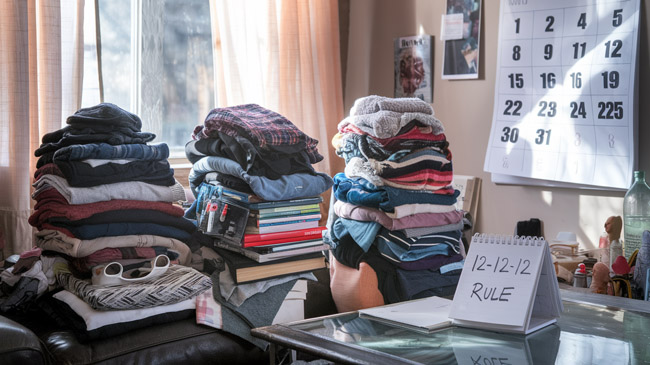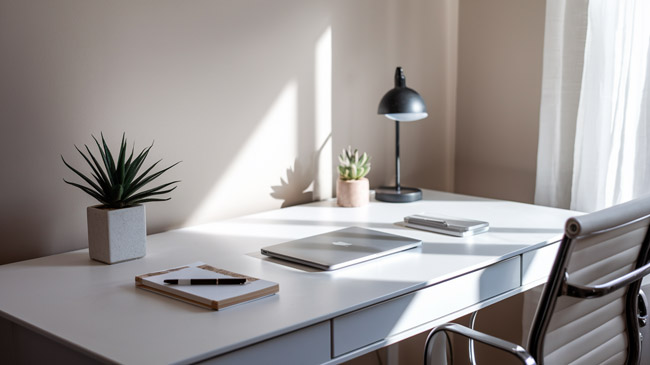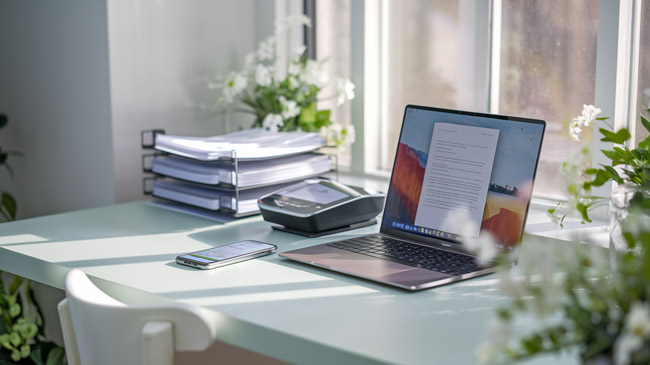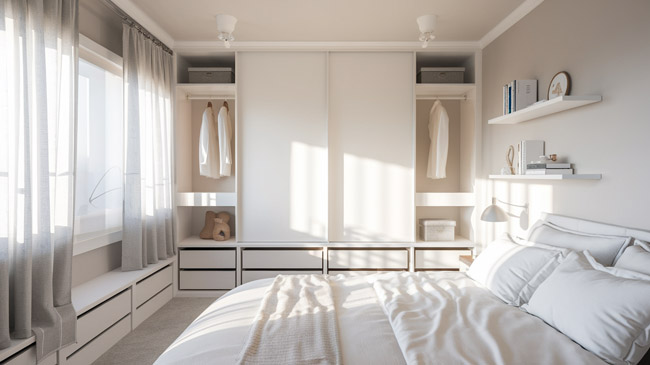Is your home feeling a bit crowded lately? You’re not alone! As spring approaches, many of us find ourselves surrounded by clutter that’s accumulated over the winter months. But what if there was a fun and simple way to tackle this overwhelming task? Enter the 12-12-12 decluttering that’s taking the organizing world by storm!
Imagine transforming your living space into a tidy, peaceful haven in just a few hours. The 12-12-12 decluttering offers a fresh, exciting approach to decluttering that turns a daunting chore into an engaging game. It’s not just about getting rid of things; it’s about rediscovering your space and creating room for what truly matters in your life.
Ready to embark on this decluttering adventure? In this blog post, we’ll dive into the ins and outs of the 12-12-12 Rule, from understanding its core principles to implementing it in various areas of your home. You’ll learn how to prepare for the 12-12-12 decluttering, make the most of your decluttering efforts, and even expand the concept to suit your unique needs. Let’s get started on your journey to a clutter-free, rejuvenated living space!
Understanding the 12-12-12 decluttering

A. Definition and concept
The 12-12-12 Rule is a simple yet effective decluttering challenge that can help you streamline your living space. Here’s how it works:
- Find 12 items to throw away
- Locate 12 items to donate
- Return 12 items to their proper place
This method provides a structured approach to decluttering, making the task less overwhelming and more manageable. By focusing on specific numbers, you can turn decluttering into a fun and rewarding game.
| Category | Action | Impact |
|---|---|---|
| Throw away | Discard 12 items | Reduces waste and clutter |
| Donate | Give away 12 items | Helps others and frees up space |
| Return | Put back 12 items | Improves organization |
B. Origins of the challenge
The 12-12-12 Rule gained popularity through social media and minimalist lifestyle blogs. While its exact origin is unclear, it aligns with other decluttering techniques that emphasize simplicity and intentional living. This challenge resonates with people seeking practical ways to reduce clutter and create more organized living spaces.
C. Benefits of this decluttering method
You’ll find numerous advantages to adopting the 12-12-12 Rule:
- Manageable chunks: Breaking down decluttering into smaller tasks makes it less daunting
- Quick results: You can see immediate progress in your space
- Balanced approach: It addresses different aspects of clutter (trash, donations, and misplaced items)
- Versatility: Applicable to any room or area in your home
- Habit-forming: Regular practice can lead to long-term organizational skills
By incorporating this method into your spring cleaning routine, you’ll be well on your way to a more organized and clutter-free home. Now that you understand the basics of the 12-12-12 Rule, let’s explore how to prepare for this exciting challenge.
Preparing for the Challenge
Setting goals and intentions
Before diving into the 12-12-12 decluttering, it’s crucial to set clear goals and intentions. Ask yourself:
- What do you want to achieve through this challenge?
- How do you envision your space after decluttering?
- What specific areas of your life will benefit from a more organized home?
By answering these questions, you’ll create a strong foundation for your decluttering journey. Remember, your goals should be SMART: Specific, Measurable, Achievable, Relevant, and Time-bound.
Gathering necessary supplies
To make your decluttering process smooth and efficient, gather these essential supplies:
- Storage bins or boxes
- Trash bags
- Labels and markers
- Cleaning supplies
- Donation bags
| Supply | Purpose |
|---|---|
| Storage bins | Sorting items |
| Trash bags | Disposing of unwanted items |
| Labels | Organizing and categorizing |
| Cleaning supplies | Refreshing decluttered areas |
| Donation bags | Preparing items for charity |
Choosing your target areas
Identify the areas in your home that need the most attention. Consider:
- High-traffic zones
- Spaces that cause you stress
- Areas with visible clutter
Prioritize these areas based on their impact on your daily life and the level of difficulty in decluttering them.
Creating a timeline
Now that you’ve set your goals and identified target areas, it’s time to create a realistic timeline. Break down your decluttering challenge into manageable steps:
- Set a start date
- Allocate specific days for each target area
- Schedule breaks to avoid burnout
- Set a completion date
Remember, the 12-12-12 rule is flexible, so adapt your timeline to fit your lifestyle and commitments. With your preparation complete, you’re now ready to implement the 12-12-12 rule and transform your space.
Implementing the 12-12-12 Rule

Identifying 12 items to throw away
As you begin implementing the 12-12-12 Rule, start by identifying 12 items to throw away. Look for things that are broken, expired, or no longer serve a purpose. Consider the following categories:
- Expired food items
- Worn-out clothing
- Broken electronics
- Old magazines or newspapers
- Empty containers
| Item Type | Examples |
|---|---|
| Kitchen | Expired spices, chipped mugs |
| Bathroom | Old toiletries, empty bottles |
| Office | Dried-up pens, outdated documents |
Selecting 12 items to donate
Next, focus on selecting 12 items that are still in good condition but no longer needed. These can be donated to local charities or given to friends and family. Consider:
- Clothing that no longer fits
- Books you’ve already read
- Duplicate kitchen gadgets
- Gently used toys
- Excess home decor items
Relocating 12 items to their proper places
Now, identify 12 items that are out of place and return them to where they belong. This step helps restore order and improves your home’s functionality. Look for:
- Shoes in the living room
- Coats on chairs
- Tools left out after a project
- Books on nightstands
- Misplaced remote controls
Tips for making quick decisions
To streamline your decluttering process:
- Set a timer for each category
- Trust your instincts
- Ask yourself, “Have I used this in the past year?”
- Consider the item’s value vs. the space it occupies
- Remember, you’re aiming for progress, not perfection
With these guidelines, you’ll find implementing the 12-12-12 decluttering both efficient and effective. As you move through each category, you’ll notice your space becoming more organized and clutter-free. Now that you’ve mastered the implementation, let’s explore how to tackle different areas of your home using this method.
Tackling Different Areas of Your Home

Bedroom decluttering strategies
Your bedroom should be a sanctuary for rest and relaxation. Start by sorting through your closet using the 12-12-12 rule:
- 12 items to donate
- 12 items to discard
- 12 items to keep and reorganize
Next, tackle your nightstand and dresser drawers. Remove unnecessary items and organize essentials for easy access.
| Area | Decluttering Tip |
|---|---|
| Closet | Use matching hangers for a uniform look |
| Dresser | Fold clothes using the KonMari method |
| Under-bed | Utilize storage containers for seasonal items |
Kitchen organization tips
Your kitchen can quickly become cluttered with gadgets and utensils. Apply the 12-12-12 rule to your kitchen tools and appliances. Consider these strategies:
- Group similar items together
- Use drawer dividers for utensils
- Install hooks for frequently used pots and pans
Living room refresh ideas
Create a welcoming space by decluttering your living room. Focus on:
- Organizing bookshelves
- Sorting through magazines and newspapers
- Decluttering entertainment centers
Use decorative baskets to store blankets and remote controls, keeping surfaces clear and tidy.
Bathroom clutter solutions
Bathrooms often accumulate unnecessary products. Apply the 12-12-12 rule to toiletries and beauty products. Implement these solutions:
- Use drawer organizers for makeup and small items
- Install a medicine cabinet for daily essentials
- Utilize over-the-door storage for towels and robes
Home office organization
A clutter-free workspace promotes productivity. Tackle your home office by:
- Sorting through paperwork
- Organizing digital files
- Decluttering desk drawers
Use cable management solutions to keep cords tidy and invest in a filing system for important documents.
Now that you’ve tackled different areas of your home, let’s explore how to make the most of your decluttering efforts.
Making the Most of Your Decluttering Efforts
Proper disposal methods
Now that you’ve identified items to discard, it’s crucial to dispose of them responsibly. Here are some eco-friendly disposal methods:
- Recycling: Sort recyclables like paper, plastic, and glass
- E-waste collection: Take electronics to designated drop-off points
- Hazardous waste disposal: Use special facilities for chemicals and batteries
- Composting: Turn organic waste into nutrient-rich soil
Donation center options
Your unwanted items could be someone else’s treasure. Consider these donation options:
| Organization | What They Accept |
|---|---|
| Goodwill | Clothing, furniture, electronics |
| Salvation Army | Household items, appliances, toys |
| Local shelters | Toiletries, bedding, non-perishable food |
| Schools | Books, art supplies, sports equipment |
Selling valuable items
Turn your decluttering efforts into cash by selling items you no longer need:
- Online marketplaces: List on eBay, Facebook Marketplace, or Craigslist
- Consignment shops: Great for designer clothing and accessories
- Yard sales: Perfect for miscellaneous household items
- Specialty buyers: For collectibles, antiques, or high-end electronics
Upcycling possibilities
Before discarding, consider giving items a new life through upcycling:
- Transform old jars into decorative vases or storage containers
- Repurpose wooden pallets into rustic shelving or outdoor furniture
- Convert worn-out clothing into cleaning rags or quilts
- Use broken ceramics for mosaic art projects
By maximizing your decluttering efforts through 12-12-12 decluttering, you’re not only simplifying your home but also contributing to a more sustainable lifestyle. Next, we’ll explore how to maintain your newly organized space.
Maintaining a Clutter-Free Space

Developing new habits
Now that you’ve successfully decluttered using the 12-12-12 rule, it’s time to focus on maintaining your clutter-free space. Developing new habits is crucial for long-term success. Here are some key habits to cultivate:
- One in, one out: For every new item you bring home, remove one existing item
- 10-minute daily tidy: Spend just 10 minutes each day putting things back in their place
- Mindful purchasing: Ask yourself if you really need an item before buying it
- Digital decluttering: Apply the same principles to your digital life, organizing files and emails
Creating organization systems
Efficient organization systems make it easier to maintain a clutter-free home. Consider implementing these ideas:
| Area | Organization System |
|---|---|
| Closet | Color-coded hangers |
| Kitchen | Clear storage containers |
| Office | Labeled file folders |
| Bathroom | Drawer dividers |
Regular maintenance schedule
To keep your space tidy, establish a regular maintenance schedule:
- Daily: Quick 10-minute tidy-up
- Weekly: Deeper clean of one room
- Monthly: Reassess and declutter one area
- Seasonally: Rotate clothing and review stored items
Involving family members
Maintaining a clutter-free home is a team effort. Here’s how to get your family on board:
- Assign age-appropriate tasks to children
- Create a reward system for consistent decluttering efforts
- Lead by example and explain the benefits of a tidy space
- Make it fun with decluttering games or challenges
By implementing these strategies, you’ll find it much easier to maintain your newly decluttered space. Remember, consistency is key in developing these habits and systems. Next, we’ll explore how you can expand the 12-12-12 challenge to other areas of your life for even greater simplification and organization.
Expanding the Challenge
Weekly or monthly iterations
To keep the momentum going, you can adapt the 12-12-12 rule into weekly or monthly challenges. This approach allows you to maintain a clutter-free home throughout the year. Consider the following options:
- Weekly 6-6-6: Choose 6 items to donate, 6 to trash, and 6 to relocate every week
- Monthly 24-24-24: Expand the challenge to 24 items in each category per month
| Frequency | Donate | Trash | Relocate |
|---|---|---|---|
| Weekly | 6 | 6 | 6 |
| Monthly | 24 | 24 | 24 |
Adapting the rule for larger spaces
For bigger homes or more extensive decluttering needs, you can scale up the 12-12-12 rule. Here are some ideas:
- Room-by-room approach: Apply the 12-12-12 rule to each room individually
- 20-20-20 challenge: Increase the number of items in each category to 20
- Weekend warrior: Dedicate an entire weekend to a 50-50-50 challenge
Combining with other decluttering methods
Enhance your decluttering efforts by pairing the 12-12-12 rule with other popular techniques:
- KonMari Method: Use the “spark joy” concept when selecting items to keep or discard
- One-in-one-out rule: For every new item you bring in, remove one item from your home
- 90/90 rule: If you haven’t used an item in the last 90 days and don’t plan to use it in the next 90, consider letting it go
Seasonal variations of the challenge
Tailor the 12-12-12 rule to different seasons for a year-round decluttering strategy:
- Spring: Focus on winter clothing and holiday decorations
- Summer: Target outdoor gear and beach accessories
- Fall: Declutter summer items and prepare for the upcoming holiday season
- Winter: Clear out fall decor and make room for new gifts
By expanding the 12-12-12 rule, you can create a customized decluttering plan that suits your lifestyle and keeps your home organized throughout the year. Next, we’ll explore how to maintain your newly decluttered space and prevent future clutter buildup.
12-12-12 decluttering offers a fun and effective approach to decluttering your home this spring. By focusing on finding 12 items to throw away, 12 to donate, and 12 to return to their proper places, you can make significant progress in organizing your living space. This simple yet powerful method helps you tackle different areas of your home systematically, ensuring no corner is left untouched.
Remember, decluttering is not a one-time event but an ongoing process. Use the momentum gained from the 12-12-12 challenge to maintain a clutter-free space and consider expanding the challenge to other aspects of your life. By embracing this decluttering mindset, you’ll create a more organized, peaceful, and enjoyable living environment for yourself and your loved ones. Why not start your 12-12-12 journey today and experience the transformative power of decluttering?









